Flora Poetica: The Chatto Book of Botanical Verse
Selected, Edited and with an Introduction by Sarah Maguire
Recently this book featured as a prop in my “In a Vase on Monday” post, and I realized I had not reviewed it although I have had it for several years now.
This collection of poetry is the second favourite in my book shelf (my first favourite is the New Dragon Book of Verse which I learned to love in my school days!), and it often gets an airing, not just in winter.
The poems are all about plants, and they are (in my opinion!) all wonderful… in very different ways. Perhaps I haven’t read every single one, but there are many I have read over and over again. One seasonal example is Louise Glück’s “Snowdrops”, which I find very moving. Here’s an excerpt…
“… I did not expect to survive,
earth suppressing me. I didn’t expect
to waken again, to feel
in damp earth my body
able to respond again, remembering
after so long how to open again
in the cold light
of earliest spring–“
The book is divided rather unusually into botanical families, which means that I have learnt a few things while thumbing through it. Did you know, for example, that forget-me-nots are in the same family as borage? I suppose some of you did, as you are all so knowledgeable, but I had never given it much thought! We are taken through over 50 different botanical families such as the Maple and the Beech, the Onion, Arum, Lily, Beech, Spurge and Olive, and many of the poems have a note on the botanical name of the plant, tree or flower that is the subject. The sections vary in length; families like the Vine have only one, while the Rose section has over 40. One of my favourites in the Rose section is Dorothy Parker’s “One Perfect Rose”, and here are the first and last verses…
A single flow’r he sent me, since we met.
All tenderly his messenger he chose;
Deep-hearted, pure, with scented dew still wet –
One perfect rose….
… Why is it no one ever sent me yet
One perfect limousine, do you suppose?
Ah no, it’s always just my luck to get
One perfect rose.
Another surprising element of this anthology is to read one poem from, say, the 17th century and then the next one is from the 20th century. For example, Robert Herrick’s poem “To Daffadills” is followed by Sylvia Plath’s “Among the Narcissi”. Then the first line of the 1998 James Reiss poem “Lily” reads “Went out & scissored a lily…” and on the opposite page we read “White though ye be; yet, Lillies, know…” in Robert Herrick’s “How Lillies Came White” from 1648. These juxtapositions are fascinating, unexpected and work very well.
It is also fascinating to see the way certain plants, such as the rose, have captured the romantic imagination over centuries. Symbols and human desires have changed very little over time, even though the countryside in which they grow has altered dramatically. John Clare‘s idyllic images of rural England in the early 19th century demonstrate this time and again with his references to meadows, wheatfields and cattle grazing. There are quite a few of his poems here; with his eye for detail and his passion for the countryside he tended to focus frequently on individual plants.
And then having Sylvia Plath next to Ted Hughes, or John Clare (“The Wheat Ripening”) next to Vikram Seth (“Evening Wheat”) is, quite simply, very enjoyable reading.
There are many writers in here I did not know before, from all over the globe, and I have been encouraged to look for more of their work. But then there are also the lovely old English familiars; Thomas Hardy, John Donne, W.B.Yeats, William Wordsworth, D.H. Lawrence, etc.
The book has an index of the poems under the botanical families, as well as an index of poets, one of titles AND one of first lines. There is also a nice introduction by Sarah Maguire, a poet herself, who composed this anthology. She describes how and why she gathered so many poems on flora and gives a few details of what she was unable to include, as well.
If you love plants, botany and poetry you will most definitely like this book!
A final note: the name “Chatto” in the title refers to the publishers Chatto and Windus, an imprint of Random House. I thought there must be a connection to Beth Chatto so looked this up and found out that the founder of this publishing house in 1873 was actually Beth Chatto’s father-in- law. Curiosity satisfied!

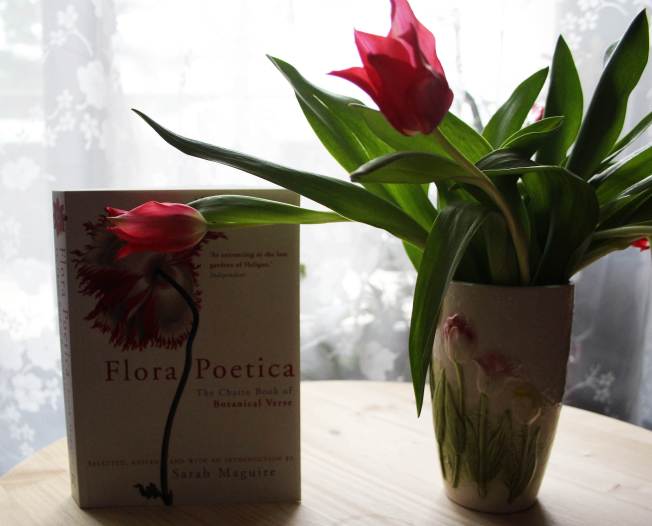
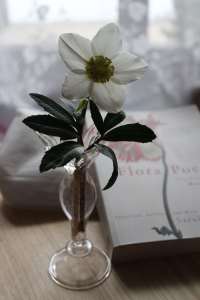
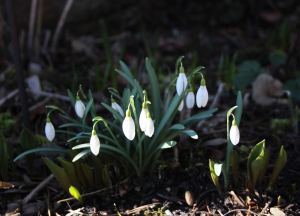

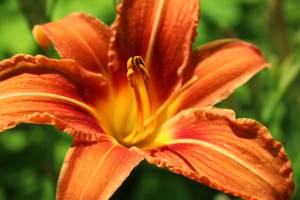
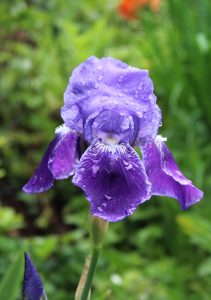

It sounds like a wonderful book! Thanks for the review. 🙂
Glad you enjoyed the review. Yes, it really is a wonderful book!
Thanks for the review; I’m not much of a poetry person but this appeals. Don’t forget to review about Tradescant you were reading, I’m thinking of getting it but was a little unsure after reading the synopsis.
Hi Christina. I’m not sure I will review that book, as it was a little tedious from about half way. I should have known really, as I am not a Philippa Gregory fan. I was hoping for even more references to plants, but it all got tied up with Tradescant’s relationship with his “Lord” and lengthy descriptions of sea battles. Not my cup of tea!
I did rather think it might be like that, so your comments are very helpful. I have read several of her books but I’ve noticed she doesn’t know much about plants!
How interesting, it sounds like a fascinating book. One of my favourite poets who includes “nature” in his verse is the Dorset dialect poet William Barnes. One of his poems “My orchard in Linden Lea” was set to music by Vaughan-Wlliams.
I love the poetry of John Clare as he lived in and wrote about my home county of Northamptonshire… it’s good to see familiar things from one’s own region put into poetry.
I never knew this book existed! Thank you for this wonderful post, your commentary about the poems, and the beautiful flower photography. I must get this book!
You will love it Valorie, I’m sure!
I am generally not much of a poetry reader, but this book sounds tempting.
If you’re going to buy a poetry book at any time, this is the only one I have found that is a real treasury for true gardeners. When a particular flower starts blooming in my garden I like to see if I can find a poem in there to match!
So glad to read this post Cathy as this book has completely escaped my radar. Will have to break my self-imposed no more new books embargo 🙂 I see from the above comment that you are originally a Northamptonshire girl and wonder where you hail from. I was born in Peterborough so not far away from John Clare’s birthplace at all so was lucky enough to come across his poetry at an early age 🙂 Cathy, it may be just my ageing eyes but I found it very challenging to read the red type on the purple background 😦
Hi Anna. Yes, originally from just outside Northampton itself. I know you will love this book Anna! (There are several John Clare poems in there). Thank you for the tip about the print, I’ll change it to a darker colour. It’s always useful to get feedback on things like that as everyone has different equipment, so it is appreciated. Have a nice weekend! 🙂
The book is now in my collection so many thanks Cathy – first impressions are most favourable indeed 🙂 Thanks also for changing the colour of the print which makes it oh so much easier on my eyes.
You’re welcome Anna! 🙂
I like the concept of this collection Cathy. Will have to seek it out. (I think I’ve been missing some of yours and other’s posts recently as they may not be showing up in my reader promptly. Glad I went back and came across this one.)
The fact that I am learning from this book as well as enjoying the poems makes it all the more attractive Susie. I think you’d like it too.
What a lovely book to have, I can certainly see why it is one of your very favorites. I think the first poem is especially fitting for this time of the year. When winter is harsh, you think nothing can possibly survive. As snowdrops start to bloom in spring, we are so grateful for the delicate beauty of nature and how strong many plants are.
Very true Karen. I am impatient to see my first snowdrop open, and then I can believe again that the garden will come back to life – slowly but surely!
I enjoy writing poetry and have dabbled in writing a few poems about flowers….but I have recently begun to collect poems about flowers so I will check out this book as it sounds perfect.
I’m sure you’ll like this Donna, as there is so much variety in it. Perhaps you’ll share another of your own poems with us soon.
That sounds like a great book!! Your flower pictures are great, wishing for Spring so we can see all the beautiful flowers!!! Cold here today with sleet on the ground!
Thanks Michael. We saw the sun today, but there’s not much warmth in it yet – still snow on the ground!
We had sun today too but with the wind chill we had temperature around 20 degrees all day! 🙂
I MUST get a copy. Poems and plants–nothing better.
You will love it Alice, I’m sure! 🙂
I looked but can’t find it here. Will send a librarian to order an inter-library loan copy.
Hope you find a copy.
Sounds like a wonderful read! And, as always, your photos are absolutely lovely.
Thanks Sheryl!
A delight to read your review and the excerpts. I wondered about the Chatto connection, so thank you for your efforts!
Glad you enjoyed it Claire. Chatto is such an unusual name I knew there must be a connection.